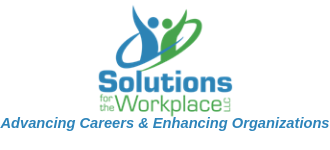No one cares more about your career than you do. As an employee, you need to be proactive in your career—this includes creating an Individual Development Plan (IDP) with your supervisor. And, if your supervisor does not offer this opportunity, seize the reins yourself! There are four steps to planning your career: Assess, Explore, Plan, and Take Action.
Planning your career can seem like a difficult task, but with the right approach, you can open up new doors without feeling overwhelmed. No matter where you are in your career – whether you are a long-time federal employee, a new employee, or a Veteran entering the civilian workforce – career planning with this four-phase career development model can help you break things down into manageable steps. Here’s how it works:
Assess
During the Assess phase, you get to ask yourself an important question: What do you really want to do with your career?
You can start this process on your own – it’s as simple as brainstorming about your interests, priorities, and goals. Or, you can get feedback from people who know you well.
As you assess yourself, be sure to focus on your strengths. While it’s important to understand and work on your shortcomings, the biggest career growth can actually come from further developing skills or behaviors in which you already excel. Finally, as part of the Assess phase, you should think about the tradeoffs you are willing to make in your career. For example, if your goal is getting a higher paying job, think about how long a commute you are willing to have in exchange. Considering tradeoffs like this can give you more insight into your actual priorities.
Explore
During the Explore phase, you are looking for opportunities that move you toward your overall career goals. This means researching various career paths on your own or through conversations with others.
A good first step in the Explore phase may be to find a mentor in the career field that interests you who can talk with you about next steps or good developmental opportunities for you to complete.
Another great activity is to shadow someone in the workplace. Job shadowing is when you observe someone for a day to learn more about whether that person’s career field or specific job could be a good fit for you. Express interest to the person you want to shadow and see if he or she has enough time available. Then, work with your supervisor or mentor to set it up.
In the Explore phase, keep in mind that any activity that helps you discover more about a career you may be interested in is worth considering. This includes the activities above but can also be as simple as having lunch with someone who is knowledgeable about another career to get his or her insider’s perspective.
Plan
Now that you understand yourself and the career possibilities in front of you, you are ready to create a plan. Coming up with a solid plan can be easy when you approach the process with an Individual Development Plan (IDP). IDPs provide the structure you need to stay on track.
You can set effective career goals in your plan using the SMART (Specific, Measurable, Actionable, Realistic, Timebound) method, which will help you think about the concrete steps you will take to achieve your goals. Is there training you need to complete to be eligible for a new position? Or are there experiences you can get in your current position that will qualify you for your next? For instance, if one of your goals is to improve your communication skills, you might plan to gather feedback on your communication skills from your peers and supervisors and then spend time learning about different communication styles. Or, you could take a course to learn about communicating effectively during meetings.
Take Action
Now, you’re ready to put your plan in motion. Depending on the goals you have identified, you may be taking a few hours of training each week, shadowing another employee to see what it takes to succeed in his or her position, or applying for a new job. As you complete your planned steps, don’t forget to gather feedback on your activities from a supervisor or mentor. You should also review and adjust your IDP as you go based on your progress toward your career goals.
By using these four phases for your career planning, you will be well on your way to the career you want. But remember to be flexible – developing your career is a continuous process. As your priorities evolve, you should feel free to bounce back and forth between the four phases, getting what you need from each.
